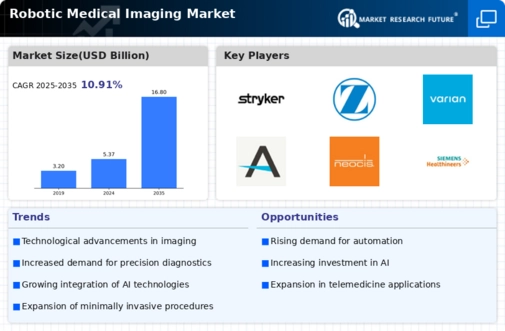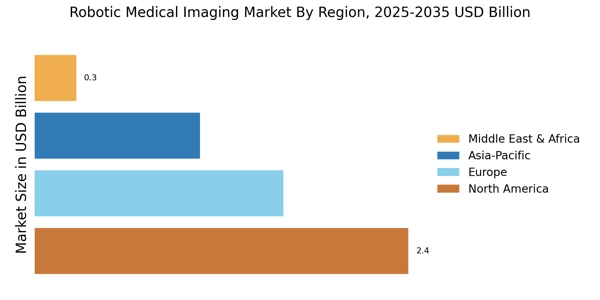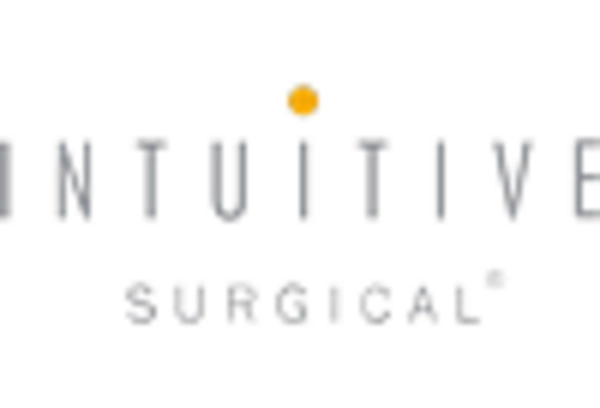Rising Geriatric Population
The Robotic Medical Imaging Market is significantly influenced by the rising geriatric population, which is more susceptible to various health conditions requiring advanced imaging techniques. As the global population ages, the demand for accurate diagnostic tools becomes increasingly critical. Older adults often require imaging for conditions such as cancer, cardiovascular diseases, and neurological disorders. Market projections indicate that the geriatric demographic will account for a substantial portion of healthcare expenditures, thereby increasing the need for robotic imaging solutions. This demographic shift is likely to propel the growth of the robotic medical imaging market as healthcare providers seek to enhance diagnostic accuracy and patient outcomes.
Integration of Artificial Intelligence
The integration of artificial intelligence (AI) into the Robotic Medical Imaging Market is transforming the landscape of medical diagnostics. AI algorithms enhance image analysis, enabling faster and more accurate interpretations of imaging data. This technological synergy not only improves diagnostic capabilities but also streamlines workflows in clinical settings. Recent studies indicate that AI-enhanced imaging systems can reduce diagnostic errors by up to 20%, thereby increasing the reliability of patient assessments. As healthcare institutions increasingly adopt AI technologies, the demand for robotic imaging systems that incorporate these advancements is expected to rise, driving market growth in the coming years.
Technological Advancements in Imaging Systems
The Robotic Medical Imaging Market is experiencing a surge in technological advancements that enhance imaging capabilities. Innovations such as high-resolution imaging, 3D visualization, and real-time data processing are becoming increasingly prevalent. These advancements not only improve diagnostic accuracy but also facilitate better treatment planning. For instance, the integration of robotic systems with advanced imaging modalities like MRI and CT scans is expected to drive market growth. According to recent data, the market for robotic imaging systems is projected to grow at a compound annual growth rate of approximately 12% over the next five years. This growth is indicative of the industry's response to the demand for more precise and efficient imaging solutions.
Growing Investment in Healthcare Infrastructure
The Robotic Medical Imaging Market is benefiting from growing investments in healthcare infrastructure across various regions. Governments and private entities are increasingly allocating funds to upgrade medical facilities and incorporate advanced technologies. This investment trend is particularly evident in emerging markets, where the demand for modern healthcare solutions is on the rise. Data suggests that healthcare spending in these regions is expected to increase by over 15% in the next few years, creating opportunities for the adoption of robotic imaging systems. As healthcare facilities modernize, the integration of robotic medical imaging technologies is likely to become a priority, further driving market expansion.
Increased Demand for Minimally Invasive Procedures
The Robotic Medical Imaging Market is witnessing a notable increase in the demand for minimally invasive procedures. As healthcare providers and patients alike seek alternatives to traditional surgical methods, robotic imaging systems play a crucial role in facilitating these procedures. The ability to perform surgeries with smaller incisions leads to reduced recovery times and lower risk of complications. Market data suggests that the adoption of robotic-assisted surgeries has increased by over 30% in recent years, reflecting a shift in surgical practices. This trend is likely to continue, further propelling the growth of the robotic medical imaging sector as it aligns with the broader movement towards patient-centered care.


















Leave a Comment